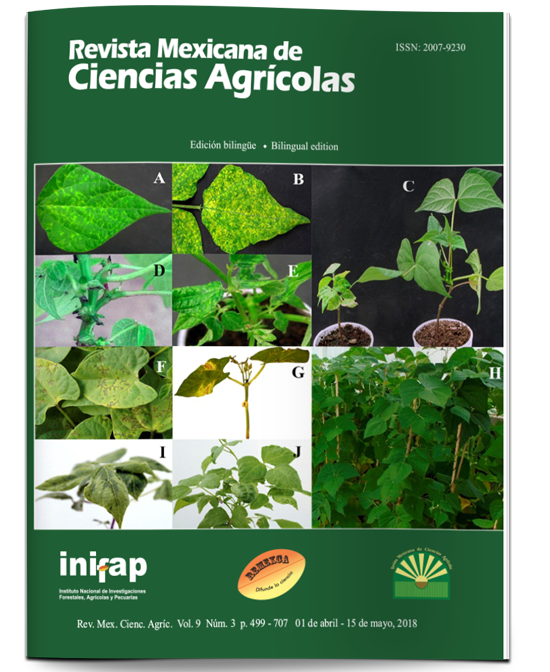Production stability of advanced rice lines long thin grain in Michoacán Mexico
DOI:
https://doi.org/10.29312/remexca.v9i3.606Keywords:
Oriza sativa, elite lines, genetic materials, paddy rice, rice technologiesAbstract
In Mexico, long and thin rice is the most consumed, so its supply has depended mainly on imports. Consequently, the Mexican Rice Council handed INIFAP the elite lines that generated the Latin American Rice Irrigation Fund (FLAR) for the evaluation and selection of materials. In order to validate advanced lines of long and thin grain rice compared to conventional material under the conditions of the Michoacán production area, experimental works were developed in different cycles: autumn-winter 2014-2015 (trial 1), spring summer from years 2015 (trial 2), 2016 (trial 3) and 2017 (trial 4) and different genotypes: trial 1) INIFLAR RT, FL05601, “Milagro Filipino”; test 2) FL06747, FL08224, INIFLA R, INIFLAR RT, Ivory, Lombardy, “Milagro Filipino”; essay 3) Lombardy, FL08224, “Milagro Filipino”; and essay 4) Ivory, Lombardy “Milagro Filipino 2. The data recorded varied in each trial, but phenological and productive aspects were included, including yield. Analysis of variance and comparison of means were performed. In trial 1, treatments exceeded the regional average, between 8,000 and 8,500 kg ha-1. In trial 2, the treatments FL06747, INIFLAR R and Lombardy stood out significantly in performance. Also, the flowering and maturity of grain, appeared early compared to “Milagro Filipino”. In trials 3 and 4, the Lombardy treatment showed higher yields. It is concluded that the advanced lines presented capacity to adapt to the production area of Michoacán. These materials were superior to the conventional material, since they showed consistency in each trial.
Downloads
Published
How to Cite
Issue
Section
License
The authors who publish in Revista Mexicana de Ciencias Agrícolas accept the following conditions:
In accordance with copyright laws, Revista Mexicana de Ciencias Agrícolas recognizes and respects the authors’ moral right and ownership of property rights which will be transferred to the journal for dissemination in open access. Invariably, all the authors have to sign a letter of transfer of property rights and of originality of the article to Instituto Nacional de Investigaciones Forestales, Agrícolas y Pecuarias (INIFAP) [National Institute of Forestry, Agricultural and Livestock Research]. The author(s) must pay a fee for the reception of articles before proceeding to editorial review.
All the texts published by Revista Mexicana de Ciencias Agrícolas —with no exception— are distributed under a Creative Commons License Attribution-NonCommercial 4.0 International (CC BY-NC 4.0), which allows third parties to use the publication as long as the work’s authorship and its first publication in this journal are mentioned.
The author(s) can enter into independent and additional contractual agreements for the nonexclusive distribution of the version of the article published in Revista Mexicana de Ciencias Agrícolas (for example include it into an institutional repository or publish it in a book) as long as it is clearly and explicitly indicated that the work was published for the first time in Revista Mexicana de Ciencias Agrícolas.
For all the above, the authors shall send the Letter-transfer of Property Rights for the first publication duly filled in and signed by the author(s). This form must be sent as a PDF file to: revista_atm@yahoo.com.mx; cienciasagricola@inifap.gob.mx; remexca2017@gmail.
This work is licensed under a Creative Commons Attribution-Noncommercial 4.0 International license.



